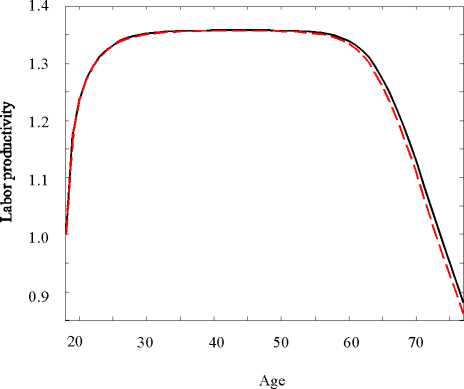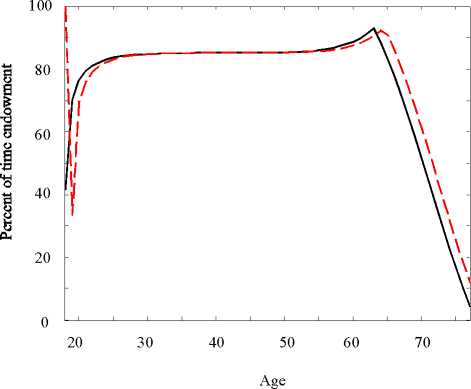Figure 4b. Labor productivity for non-conscripts (∙ = 0.25 and ∙ = 0.50)

Figures 5a and 5b show the effects on individual labor supply decisions for
conscripts and non-conscripts, respectively. Conscripts reduce their labor force
participation rates during the first couple of years after conscription has ended
and build up human capital instead. Labor force participation rates return to
normal at middle-age, and the increased labor productivity at the end of the life
cycle provides an incentive to postpone retirement and stay longer in the labor
market. Non-conscripts retire a little earlier compared to the initial steady state
equilibrium, which reflects the small reduction in labor productivity at the end
of the life cycle.
Figure 5a. Work effort for conscripts (∙ = 0.25 and * = 0.50)

No draft
Draft
15
More intriguing information
1. The name is absent2. Volunteering and the Strategic Value of Ignorance
3. The name is absent
4. The name is absent
5. Momentum in Australian Stock Returns: An Update
6. Fighting windmills? EU industrial interests and global climate negotiations
7. The InnoRegio-program: a new way to promote regional innovation networks - empirical results of the complementary research -
8. Keynesian Dynamics and the Wage-Price Spiral:Estimating a Baseline Disequilibrium Approach
9. The name is absent
10. Two-Part Tax Controls for Forest Density and Rotation Time